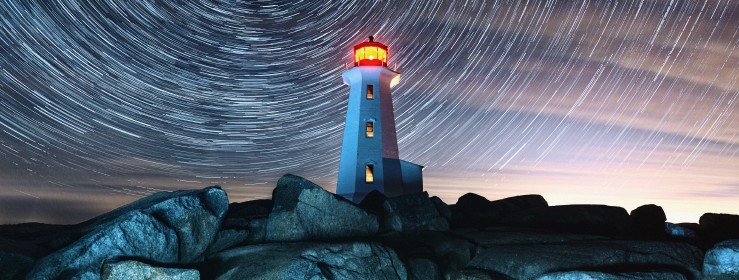As mentioned in January’s SkyTalk installment, being an astronomy author and speaker, I’m often asked two questions: “What kind of telescope should I buy?” and “What can I see with it?” We’ve covered selecting a telescope in a past issue of Sky Talk. (In summary, if you buy from a respected source like Scientifics, you can be assured of getting as quality instrument. And all three types of telescopes—refactors, reflectors and catadoptics—give good performance, each having its advantages.) As to what to look at, we’re extending last month’s roundup of solar system wonders to those of the deep-sky in “the great beyond.” (Note: to locate the showpieces in what follows, you should obtain a copy of the Mag 5 Star Atlas, or the more detailed Mag 6 Star Atlas, available from scientificsonline.com.)
Colored Stars:
To most people, the stars all look simply white. But in actuality the sky is alive with color if you take time to look carefully. One of the most dramatic examples can be found in the constellation Orion. Betelgeuse looks a ruddy orange in hue and Rigel a definite blue-white. Telescopes pull in much more light than the eye alone and you will find many examples of highly-tinted stars just sweeping the sky.
Double & Multiple Stars:
Most stars are binary or multiple systems slowly waltzing about each others. And many of these combos display stunning contrasts in color. One of the most famous is Albireo in Cygnus in the spring and summer sky, which is topaz orange and its companion sapphire blue! In the fall and winter sky in Andromeda is Almach which is a vivid orange and sea-green.
Star Clusters:
These beautiful stellar jewel boxes of hundreds of stars are scattered all over the sky. Perhaps the most famous and striking of these so-called “open clusters” is the Pleiades Cluster in Taurus in winter. Another is the Beehive Cluster in Cancer in spring. And there’s the Butterfly Cluster in summer in Scorpius. There are also even richer concentrations known as “globular clusters.” These stellar beehives pack hundreds of thousands or more stars swarming around their cores! One of the best-known is the Hercules Cluster in the summer constellation of the same name.
Nebulae:
The finest example of these stellar incubators where new stars are being born right in front of our eyes is the magnificent Orion Nebula in the winter constellation of the same name. This emerald-green cloud has four blue-white radiant diamonds known as the Trapezium at its core. Another is the Lagoon Nebula in the summer constellation Sagittarius.
Galaxies:
There are literally hundreds of these remote “island universes” within reach of small telescopes. The most famous and striking is the Andromeda Galaxy in the fall and winter constellation of the same names. This spiral is so big and bright that it’s actually visible to the unaided eye under dark skies despite its distance of more than 2,000,000 light-years! Telescopes will reveal that it has two small companion galaxies, as do most of these denizens of deep space.
Milky Way:
Saving the best for last is our own home galaxy, the Milky Way! Visible year round but at it shimmering best during the fall and winter, its massed starclouds are a joy to sweep over with a low-power, wide-field telescope. Our own Sun is but one of its estimated 500,000,000,000 stars, the solar system being located in one of its outer spiral arms.
— James Mullaney
Former assistant editor at Sky & Telescope magazine & author of nine books onstargazing. His latest, Celebrating the Universe!, is available from HayHouse.com.


